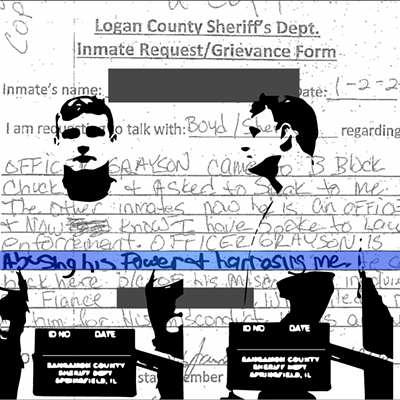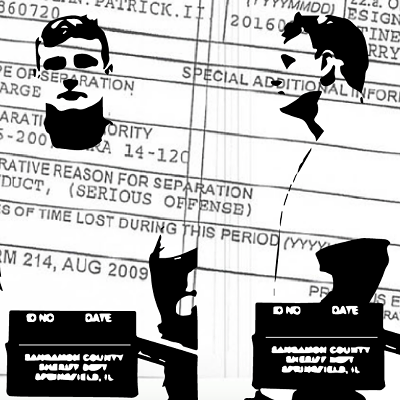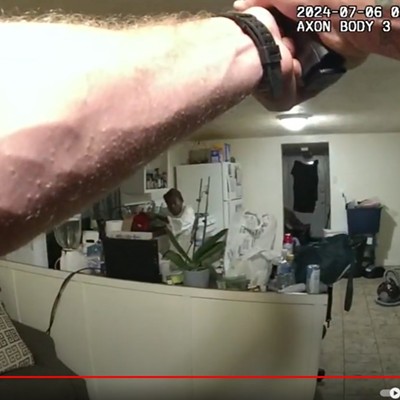The Governor’s Office of Management and Budget
released a revised state revenue and spending forecast last month for the
current fiscal year and it’s pretty good. Its projections for next fiscal year,
however, were not nearly as strong.
Projected Fiscal Year 2024 revenues have
been revised upward by $1.4 billion, according to GOMB. However, “most of this
fiscal year 2024 revenue forecast revision is assumed to be one-time in
nature,” the budget office warned.
Spending has also been revised upward by $969
million, leaving a $422 million net surplus.
According to the governor’s office, that revised
spending estimate includes the $160 million the governor is spending on
migrants. “With the $160 million we’re spending, we still have a $422 million
surplus,” said Pritzker spokesperson Jordan Abudayyeh.
Unlike most of the revenue, many of the cost
increases don’t appear to be one-time. And, of course, it’s unknown how long
the migrant crisis will last, but it could very well wind up being a
semi-permanent budgetary pressure.
That net $422 million surplus, if the estimates
hold, will come in handy because GOMB is projecting Fiscal Year 2025’s revenues
will be $480 million below its revised FY24 estimate. That, combined with
increased spending, will result in a projected deficit next fiscal year of $891
million. The deficit is expected to rise to $1.4 billion in FY26 and $1.66
billion in FY27.
Pension expenditures, including for the Chicago
Teachers’ Pension Fund, are projected to be $10.14 billion this fiscal year, or
19.7 percent of projected General Funds expenditures including the supplemental
appropriations costs, which is a little below where they’ve been for the past
few years. Pension payments will rise to $10.5 billion in FY25, or 20% of all
projected state General Funds spending. And they’ll go up $10.8 billion in
FY26, for the same 20% of all projected General Funds spending.
In other words, while the pension payments will be
high, they’ll be stable and sustainable as a percentage of the budget – as long
as the projections hold up.
Education costs are
projected to rise by $952 million between this fiscal year and FY26, according
to GOMB. The costs as a percentage of the budget will go from 25% this year to
not quite 26% of the budget in FY26. Human services costs will rise $652
million by FY26, and health care costs will rise $614 million during the same
period.
Let’s get back to that projected $891 million
deficit next fiscal year, which starts in July.
Can the projection be trusted? After all, the
global pandemic threw every economist off their game. Abruptly shutting down
the world’s economy and then trying to turn it back on again, with gigantic
bottlenecks and labor shortages emerging everywhere amid massive and sustained
government stimulus, resulting inflation, rising interest rates and an economic
boom just had no precedent.
In November of 2020, near the height of the
“second wave” of COVID-19, the governor’s budget office projected this Fiscal
Year 2024’s budget would have about a $4.7 billion deficit with a state unpaid
bill backlog of $24.5 billion. Instead, we’ve had years of budget surpluses, which
along with prudent budgeting have wiped out the bill backlog, allowed the state
to put $2 billion into a rainy day fund and pay off much of its non-capital
debt while prepaying some pension obligations. Illinois’ bond ratings,
which once neared junk status, have steadily risen to the “A” level with all
three ratings agencies.
But even before the pandemic, in the fall of 2019,
FY24’s deficit was projected to be $3.1 billion with $16 billion in backlogs. A
year earlier, in 2018, the current fiscal year’s deficit was projected to be
$3.2 billion with a $20.5 billion backlog.
So, again, can the latest projection be trusted?
Not completely, but it should still be heeded. After a period of being mostly
careful not to drastically increase the state’s base spending, and instead
using much of the unexpected revenue bonanzas for one-time items, the
legislature and the governor added a ton of money to base spending last spring.
If revenues do fall off next fiscal year, base spending will likely have to be
cut.
The governor’s budget address is three months
away, so the budget-making process is about to begin. We’ve seen countless
forecast adjustments during the past few years, so maybe this one will change,
too. But, in the meantime, everyone should prepare themselves for some
belt-tightening in the months ahead.



















